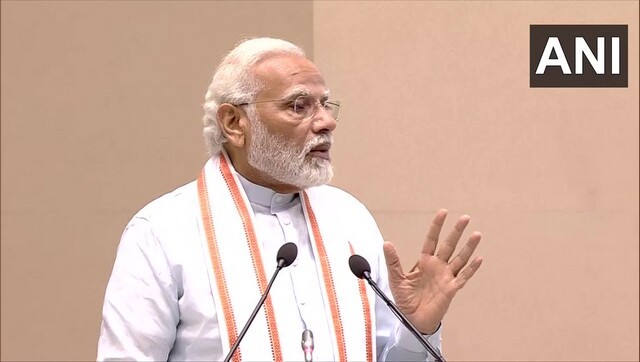Editor’s note: From May 2017, Firstpost is featuring a fortnightly column by Mridula Ramesh, titled ‘Climate Conversations’. In this column, we take a look at pressing issues pertaining to climate change — in an accessible way.
Almost everyone today knows someone who has had dengue these past few weeks.
It’s a good thing, then, that change is in the air.
When the Prime Minister of the country, in his inaugural Independence Day address, stands from the top of the Red Fort and speaks of the importance of toilets, and three years later, reinforces the message by saying: “Build toilets before temples” , change is indeed in the air.
And this is important, because waste — solid and liquid — is, as the Americans call it, “One hellava problem”.
A Big and Serious problem
Every day, Indian cities generate about 1,50,000 tonnes of solid waste. This waste ends up in landfills, lines our streets, smothers our drains and chokes our water ways. This is a big number — that’s like 50,000 elephants marching into our landfills, streets and drains every single day. To provide perspective, this is twice the number of actual elephants India has ! Waste is a big problem, and a serious one too.
But is it relevant to the climate?
One might say solid waste plays a laughably small role in warming the planet. And that person would be right. Waste management, mostly as methane from landfills, accounts for about 3 percent of annual global greenhouse gas emissions .
But managing our waste represents probably one of the single strongest adaptive actions against a warmer climate. And given the anaemic progress we are making in halting our warming emissions, we would do well to adapt.
Let us look at some of facets of this problem.
Warming temperatures makes intense, concentrated rainfall more likely. The combination of intense rainfall, and unwise urban management (with waste-clogged water ways and drains) causes flooding. The rainfall pattern is likely to get worse, which leaves the only option available to us is to manage our waste better.
Solid waste provides attractive little pockets of water for mosquitoes to lay their eggs. This helps in the explosion of mosquito-borne illnesses such as the dengue, chikungunya and malaria. Even with rampant under-reporting, a serious epidemic is underway in many Indian cities. Again, our option is to manage our waste better.
For Delhi residents, “Winter is coming” is not just a catchy line from a TV Show; it represents the dangerous air pollution that reaches Delhi when the farmers of surrounding states set fire to any agricultural waste left on their fields.
There is also the plastic issue — one alarming statistic is that we may well have more plastic in our ocean than fish by 2050 .
Then there is the electronic waste and hazardous waste issue — dramatised in the Tamil movie, Singam 3. India generates 1.8 million tonnes of e-waste a year , and this stuff is dangerous, because it contains lead, mercury and cadmium. Sadly, many of the “sorters” of this waste tend to be children, and they pay a heavy price with their health.
In the face of such a large, dispersed problem, we need hope.
A need for hope
Hope is often fragile, hard to cultivate and sustain in the face of the near-constant rubbish one sees around.
Let me relate my personal experience in how I keep hope alive. In the past two years, our household waste sent out has come down by 90%. We recently installed a biogas plant at home, which made us “run out” of waste — necessitating a weekly trip to the flower markets to pick up “waste” from corporation dustbins.
What an odd statement: “Run out” of waste?? In the process of going to “Negative waste” (which is a whole different story), there were many learnings — the biggest one is that waste = resource, and one, when used correctly, can give us value. Our biogas plant, for instance, saves us between 1-1.5 cylinders per month.
But hope alone is insufficient. We need it to translate to a scalable solution.
What form will a solution take?
The outline of a solution
We’ll get there, but first, let us consider status quo.
Many under-staffed corporations with multiple mandates (of which managing solid waste is just one) collect the garbage from our house and take it to the landfill. Performance rewards, are rare/non-existent, as are punishments.
To bring this point home, imagine if we were to bring up our children this way. No praise for jobs well done, and no punishment for transgressions or non-performance. How would they turn out?
Now consider the incentives of the users. We pay next to nothing for garbage collection. We face no penalties for not segregating our trash. Indeed, we pay no penalties for littering, or even urinating in public. Given that many of the problems of waste come about at the societal level, it makes little sense for us to manage our waste sensibly if our neighbour does not.
There are, of course, exceptions. Heroic corporations who have made a difference. Individuals who live a Gandhian lifestyle. But a scalable solution cannot rely on heroes. By definition, it must work for most, if not all users.
Which means, given the incentive-structure (and diffused focus), we cannot get away by just “tweaking” the current system.
Moreover, much of the current solutioning revolves around cleaning and collecting waste. But waste remains waste – costing money to manage, and, at best, sitting in the landfill, generating tonnes of methane. I would argue our focus should shift to generating value from the “waste”. The fact that money can be made acts as a magnet to pull action.
Our current system also does not pay much heed to the type of waste — food waste (and food loss up the supply chain) forms a big chunk of solid waste, followed by packaging waste. It is important to understand the varying dynamics of these when attempting a solution. One size most certainly does not fit all. This lies at the heart of the solution: if you segregate the different types of waste – either in-process, or before trashing – you create, not one, but multiple resources. This is the starting point — without this, there is no solution.
The second lies in the word “Sustainability” — an overused term, if there ever was one. While many of us use this a catchall phrase of social goodness, I should like to focus on two under-explored aspects of this term.
The first is economic sustainability of any solution — whether the person providing the service or product that addresses the problem makes a profit while doing so. Second, relatedly, the incentive-sustainability of the solution-provider and solution-user — without any watchdog or external pressure, will the solution provider and the solution user want to continue to use the solution.
Large parts of the waste ecosystem lend themselves readily to an economically sustainable model. Our neighbourhood waste dealer is living proof of that. Now put him on steroids, and expand his scope, and we have private waste managers. Large parts of the agricultural waste today are also amenable to this model — welcome news to our farmers, who are literally burning money on their fields. Managing farm waste is an ignored arrow in the government’s arsenal of schemes to double farmer incomes by 2022.
Momentum and next steps
Seeing is believing. In the next few articles, the dry-sounding principles echoed in this article become manifest in diverse places in India – from private waste managers, to biogas generators (from household size to large plants), to companies for whom a used bottle looks enticing.
There is one more piece to consider: The government has announced several schemes: Swachh Bharat, Smart City and Stand up India, to name just three. Individually powerful, but if shrewdly combined, they can become the dynamite that breaks through the stalemate of our waste problem. At the very least, they have underscored that the government’s attention is on this issue, which has increased this issue’s power to move forward.
Any traveller on the change journey understands the importance of momentum.
The momentum is with us. Let us use it.
This is the first of a multi-part series on waste. This article is a context setting piece. The ones to follow will deep dive into successful start-ups/individuals dealing with some aspect of the waste ecosystem.
The writer is the founder of the Sundaram Climate Institute, cleantech angel investor, teacher and author of a forthcoming book on Climate Change and India. Follow her work on her website ; on Twitter ; or write to her at cc@climaction.net


)




)
)
)
)
)
)
)
)